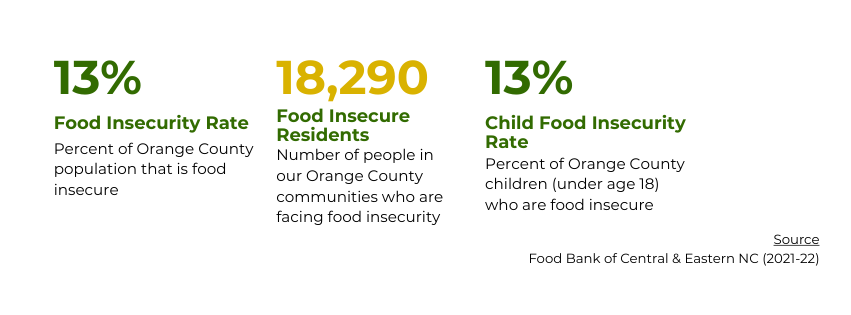How to Host a Food Drive
go.ncsu.edu/readext?1065981
en Español / em Português
El inglés es el idioma de control de esta página. En la medida en que haya algún conflicto entre la traducción al inglés y la traducción, el inglés prevalece.
Al hacer clic en el enlace de traducción se activa un servicio de traducción gratuito para convertir la página al español. Al igual que con cualquier traducción por Internet, la conversión no es sensible al contexto y puede que no traduzca el texto en su significado original. NC State Extension no garantiza la exactitud del texto traducido. Por favor, tenga en cuenta que algunas aplicaciones y/o servicios pueden no funcionar como se espera cuando se traducen.
Português
Inglês é o idioma de controle desta página. Na medida que haja algum conflito entre o texto original em Inglês e a tradução, o Inglês prevalece.
Ao clicar no link de tradução, um serviço gratuito de tradução será ativado para converter a página para o Português. Como em qualquer tradução pela internet, a conversão não é sensivel ao contexto e pode não ocorrer a tradução para o significado orginal. O serviço de Extensão da Carolina do Norte (NC State Extension) não garante a exatidão do texto traduzido. Por favor, observe que algumas funções ou serviços podem não funcionar como esperado após a tradução.
English
English is the controlling language of this page. To the extent there is any conflict between the English text and the translation, English controls.
Clicking on the translation link activates a free translation service to convert the page to Spanish. As with any Internet translation, the conversion is not context-sensitive and may not translate the text to its original meaning. NC State Extension does not guarantee the accuracy of the translated text. Please note that some applications and/or services may not function as expected when translated.
Collapse ▲Food Security was defined at the 1996 World Food Summit as “when all people, at all times, have physical and economic access to sufficient safe and nutritious food that meets their dietary needs and food preferences for an active and healthy life.” According to Feeding America, people can become food insecure due to a range of factors such as personal income, inflation, lack of transportation, and even health-related factors. Food insecurity is present across the United States, even here in Orange County, North Carolina.
It is likely you know someone who may be facing food insecurity in your community. You can help!
Click Here to Download Our Helpful Guide to Get Started on Your Next Service Project

Common Most Needed Items By Pantries*
- Canned Goods
- Canned Meat (chicken, tuna, pork, fish, etc.)
- Canned Fruit
- Canned Vegetables (beans especially)
- Canned Soup
- Canned Dairy
- Canned Pasta
- Spaghetti Sauce
- Jelly
- Dry Goods
- Pasta (whole grain is preferred)
- Dry Beans
- Lentils
- Rice (boxes or 1-pound bags)
- Cereal and Oatmeal
- Nut Butters (peanut, almond, hazelnut, etc.)
- Baking Ingredients (flour, sugar, cacao, etc.)
- Oils (canola, olive, vegetable, etc.)
- Herbs & Seasonings
- Dried Fruit
- Beverages (tea, coffee, sport drink mixes, etc.)
- Other Foods
- Breakfast/Granola Bars with protein
- Fruit or Applesauce Cups (low sugar)
- Baby Food
- Baby Formula
- 100% Juice Boxes (shelf stable)
- Squeezable pouches of fruits & vegetables
- Healthy School Snacks
- Condiments (mayonnaise, mustard, etc.)
Fresh Food is Needed Too*
Many pantries love to receive meat and fresh vegetables, too! Meat should be purchased from a retail store or farm. Meat should have been processed and packed by a licensed processor. Produce should be of good quality and be able to be held for at least 2-3 days without spoiling.
Note: Not all pantries have the capacity to store and distribute fresh produce and meat. Please call your pantry in advance to confirm what they can take and when they can take these donations.
*Important Note– Many of the individuals who will receive the food you collect are children and seniors. As you promote your drive, think about the nutritional content and ingredients of the food you will collect. Most diets benefit from foods with decreased sugar, salt, and saturated fat content. Always check with your local food pantry ahead of time to learn about the clients they expect to serve and what items are most needed.





